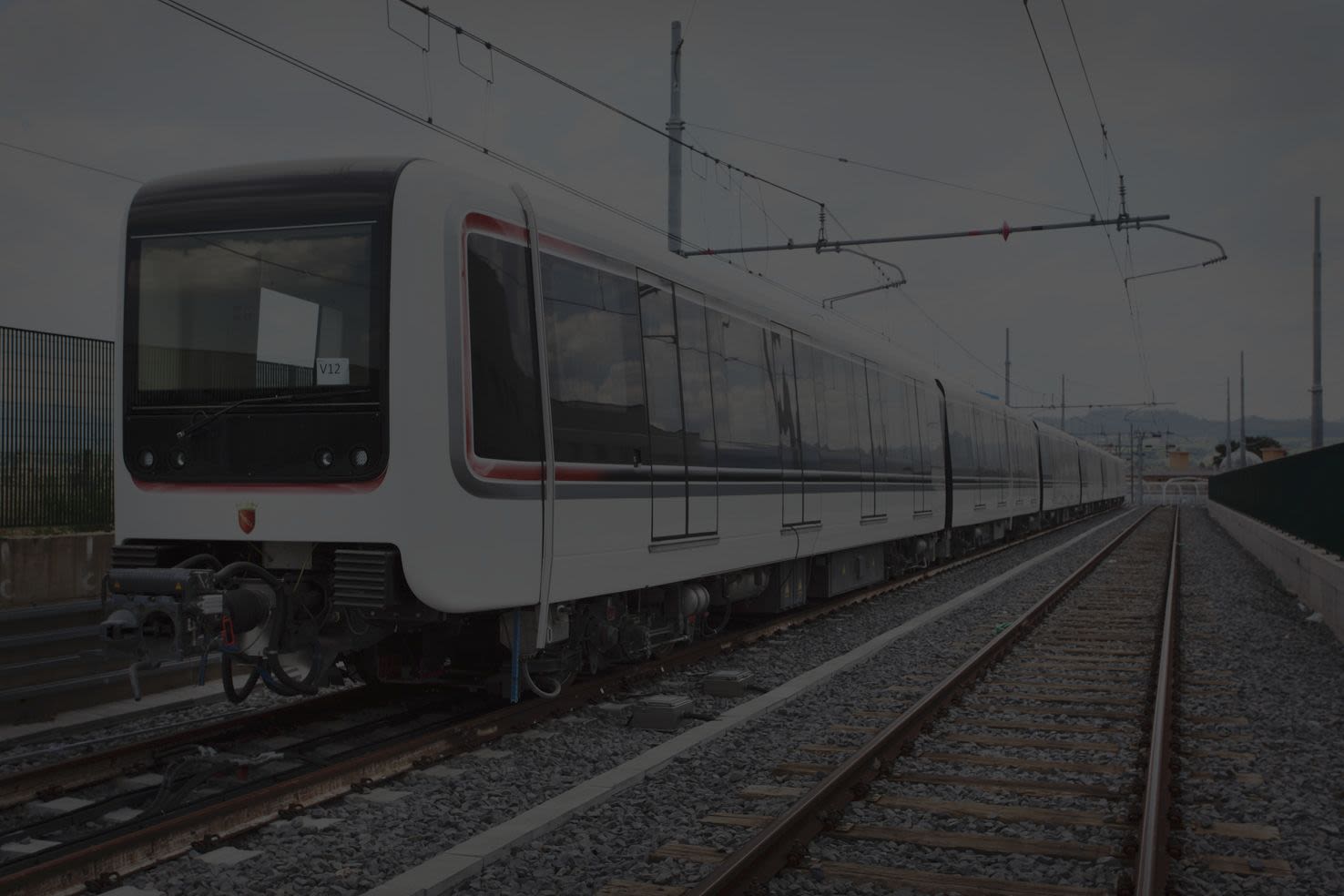Building Modern Italian Civilization On Top of Ancient Rome
Rome, Ercolano/Pompeii, and the evolution of the Subway System
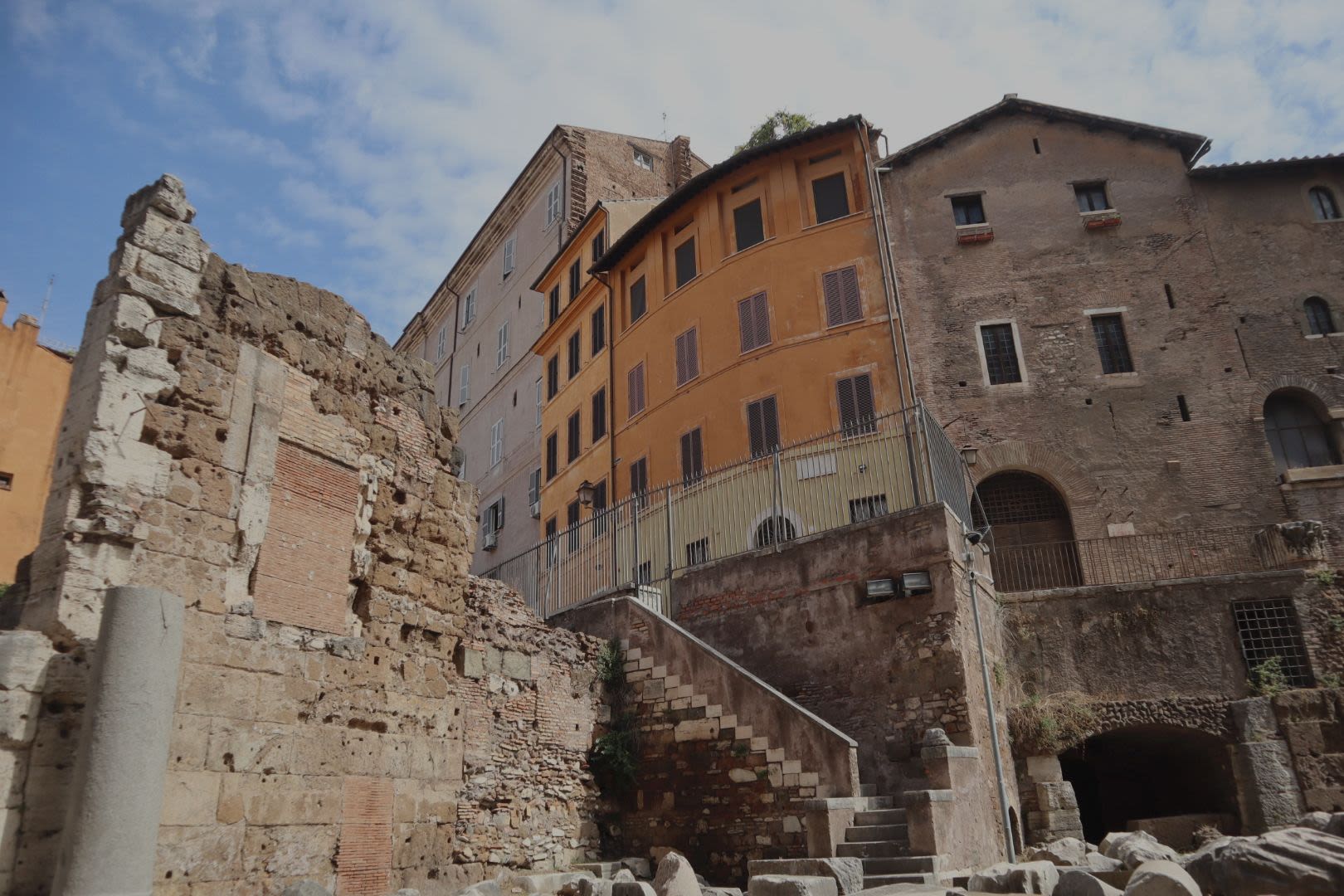
Rome, Ercolano, and Pompeii archeological sites provide a fascinating window into the past, revealing the magnificence and way of life of Roman society. Excavations in Rome have uncovered ancient ruins, underscoring the city's remarkable political and architectural achievements. After the eruption of Mount Vesuvius in Pompeii and Ercolano, archaeologists revealed elaborate paintings and everyday items beneath its ash-covered structures and antiques, offering a strikingly preserved view into Roman family life. Similarly, the same explosion that buried Pompeii also provided significant insights into Roman public places, private residences, and urban design. When taken as a whole, these archaeological sites provide a detailed picture of Roman society that enhances our comprehension of everything from the majestic artwork to the little details of everyday life.

Roma
When visiting Rome, it is constantly said that the city is built on layers on top of layers, with the oldest being at its lowest. The combination of time passing, reconstruction, dust, and debris from fires as well as flooding, the Romans would naturally raise their city upwards, thus creating the many layers of Roman civilization. Additionally, Christian churches were built on top of ancient Pagan sites. There are portions of ancient Rome still intact, with multiple houses, aqueducts, and churches scattered all over Rome, meters underground. The architecture, art, and religious history of Ancient Rome communicate its story. Modern Rome was created when Benito Mussolini, the Dictator of Italy and founder of fascism, believed that he could rebuild the ancient Roman Empire.
Archeologists have and continue to dig towards lower depths below the modern ground surface to uncover the magic of ancient Rome. Ancient Rome has been preserved and revealed from careful extractions done by archeologists and construction teams, although some discoveries have been accidental. As explained by Julia Elsey, who studied Public Archeology at London’s Global University, "all cultural heritage belongs to the state." Therefore, anything accidentally discovered in an Italian resident's yard for example, needs to be alerted to authorities immediately. The presence of ancient artifacts underground seems a daunting challenge for urban developers, whereas it is the opportunity of a lifetime for archeologists. The most recent ancient Roman discoveries are from constructing a new metro line.
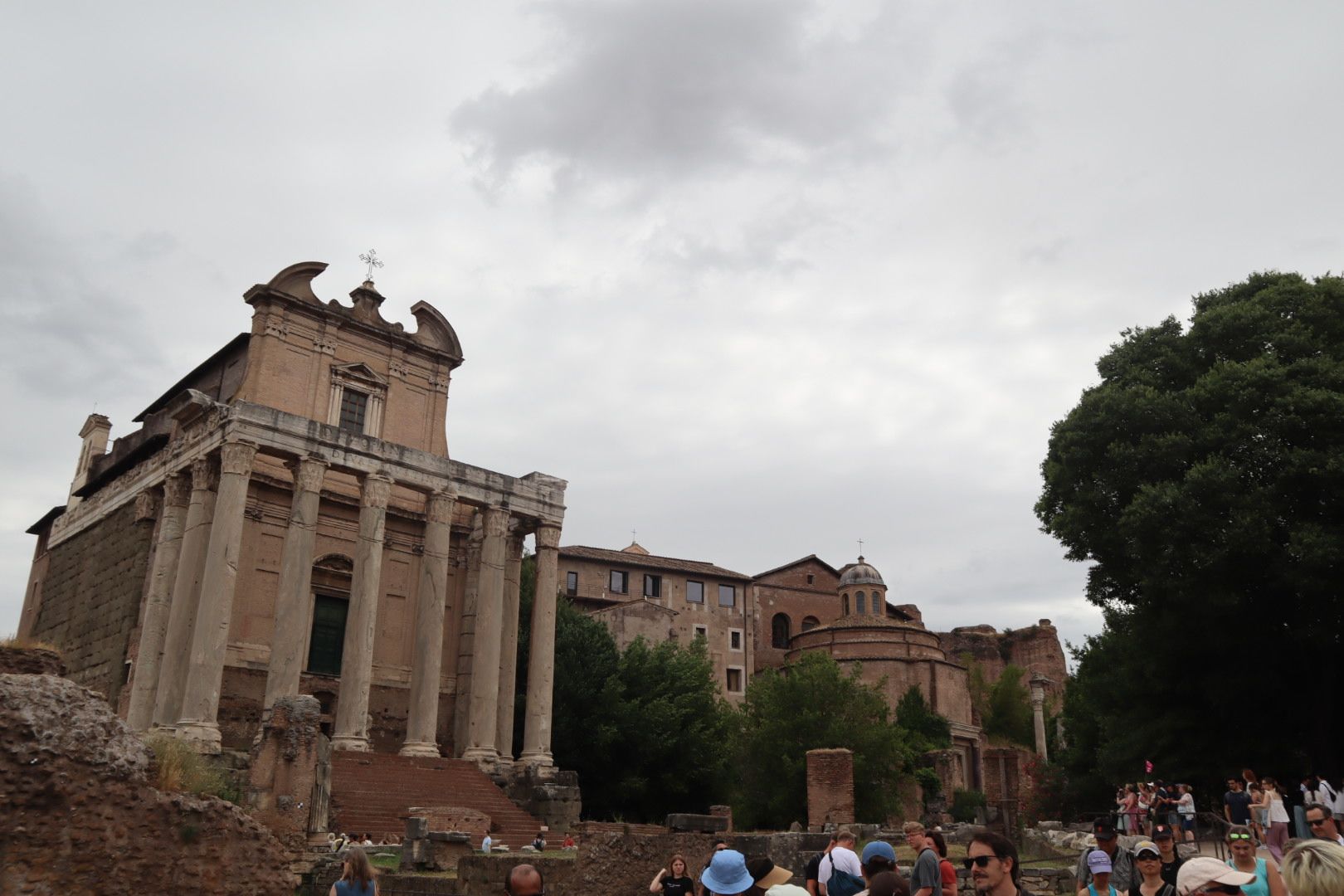
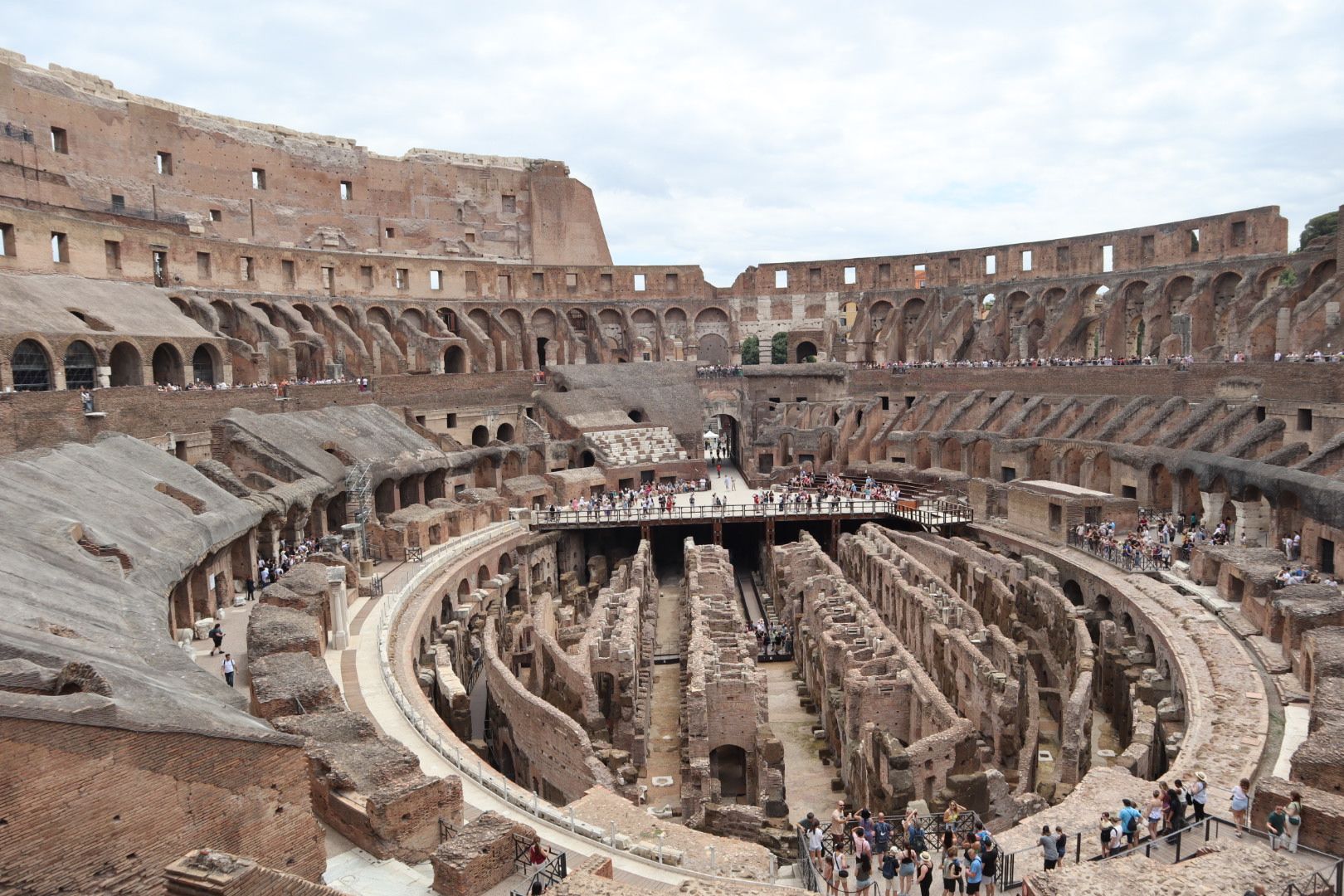
Inside the Colosseum -- Image by Bella LoBue
Inside the Colosseum -- Image by Bella LoBue
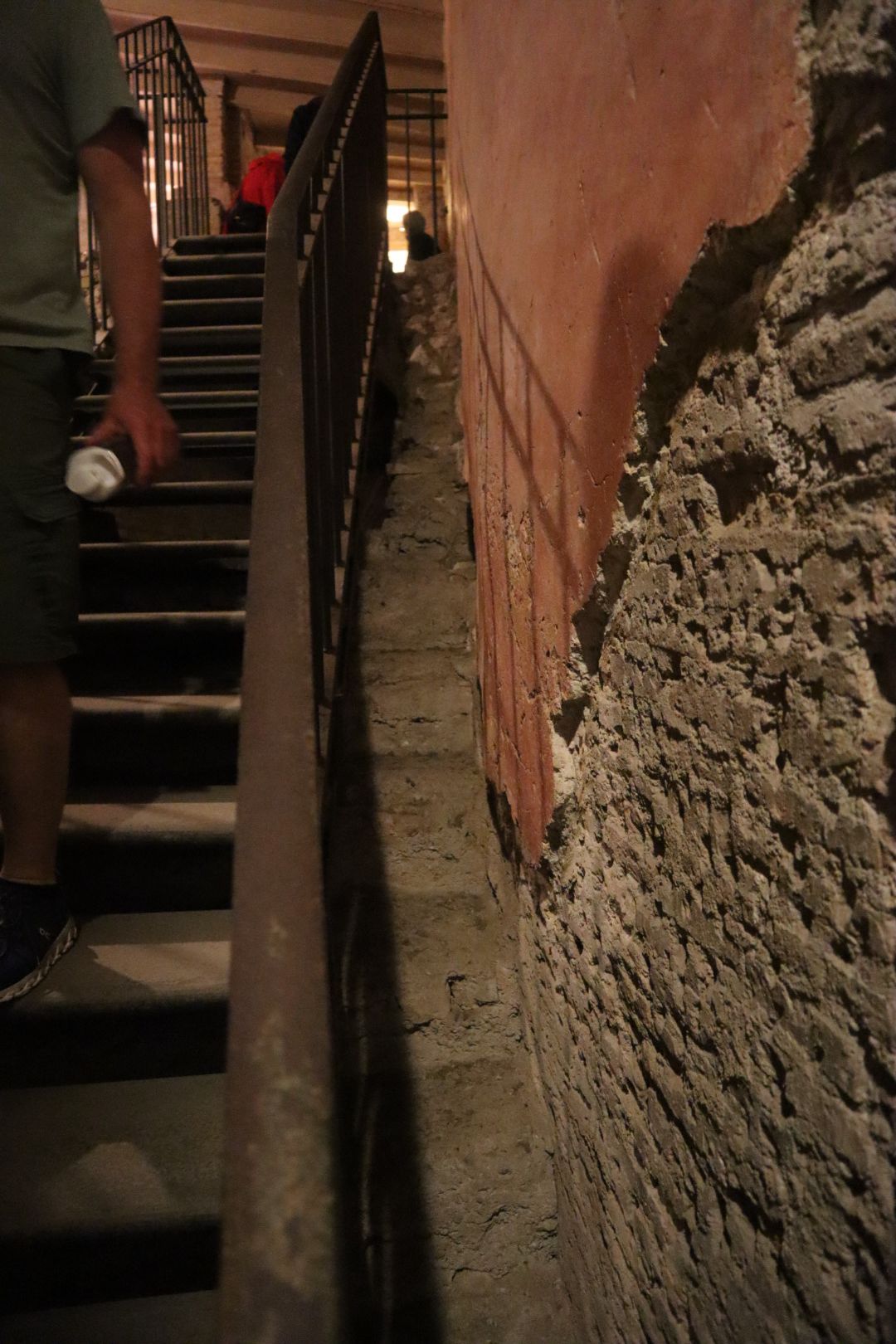
Image of a modern staircase built over an ancient one from ruins in Rome -- Image by Bella LoBue
Image of a modern staircase built over an ancient one from ruins in Rome -- Image by Bella LoBue
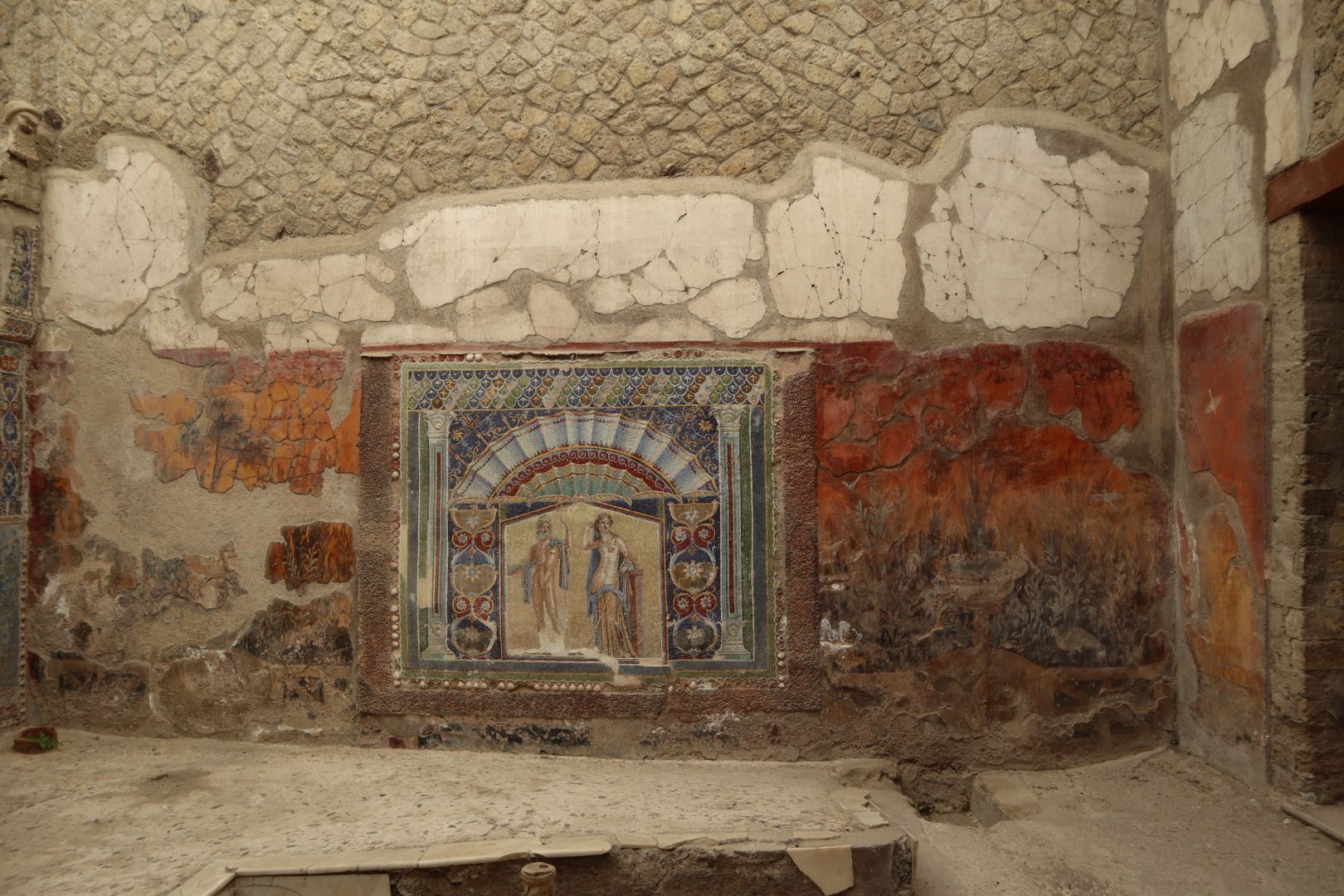
Roman art preserved in Ercolano -- Image by Bella LoBue
Roman art preserved in Ercolano -- Image by Bella LoBue
Ercolano and Pompeii
In the southern Italian towns of Ercolano and Pompeii, remains of ancient cities destroyed by the Mount Vesuvius eruption in 79 AD sit nestled between modern civilization. Carlo Cardola, a licensed tour guide in the Campania Region, took the time to compare Ercolano and Pompeii, and how the two locations differ after being affected by the same natural disaster. In Ercolano, the less famous of the two, archaeologists discovered the ruins by digging from the bottom to the top. The bottom to top method was used after the construction of a water well uncovered the wall of the Herculaneum Theater. From there, they dug underground passageways to slowly reveal the remainder of the ancient city from street level to modern day ground level. With this strategy, they were able to more successfully preserve buildings because the risk of destroying artifacts was limited. Upon walking through the streets of the original Ercolano, most of the colors, buildings, and relics have stayed intact, and this is due to the careful efforts of the excavation team.
While Pompeii is known as one of the premier tourist spots in Italy, it pales in comparison to Ercolano. In the 16th century, archaeologists began excavation of Pompeii and started to discover the ruins of the city after its demise in 79 AD. Unfortunately, they hadn’t learned the bottom to top excavation method yet, and in the process, destroyed some of the buildings and other remains. While still magnificent, Pompeii has significantly less to offer as an archeological site. Many of the buildings and roads are torn up and unable to be reconstructed. Most tourists believe this is due to the volcanic eruption decimating the entire city, however, it is the fault of the archaeologists and could have easily been avoided if proper measures were taken.
While the discovery of ancient cities was going on, the construction of modern cities was engaging in the background. Naples, Sorrento, and Capri, among others, were growing at a rapid rate, while underneath the surface, the remains of devastated societies sit, waiting to be found in the future.
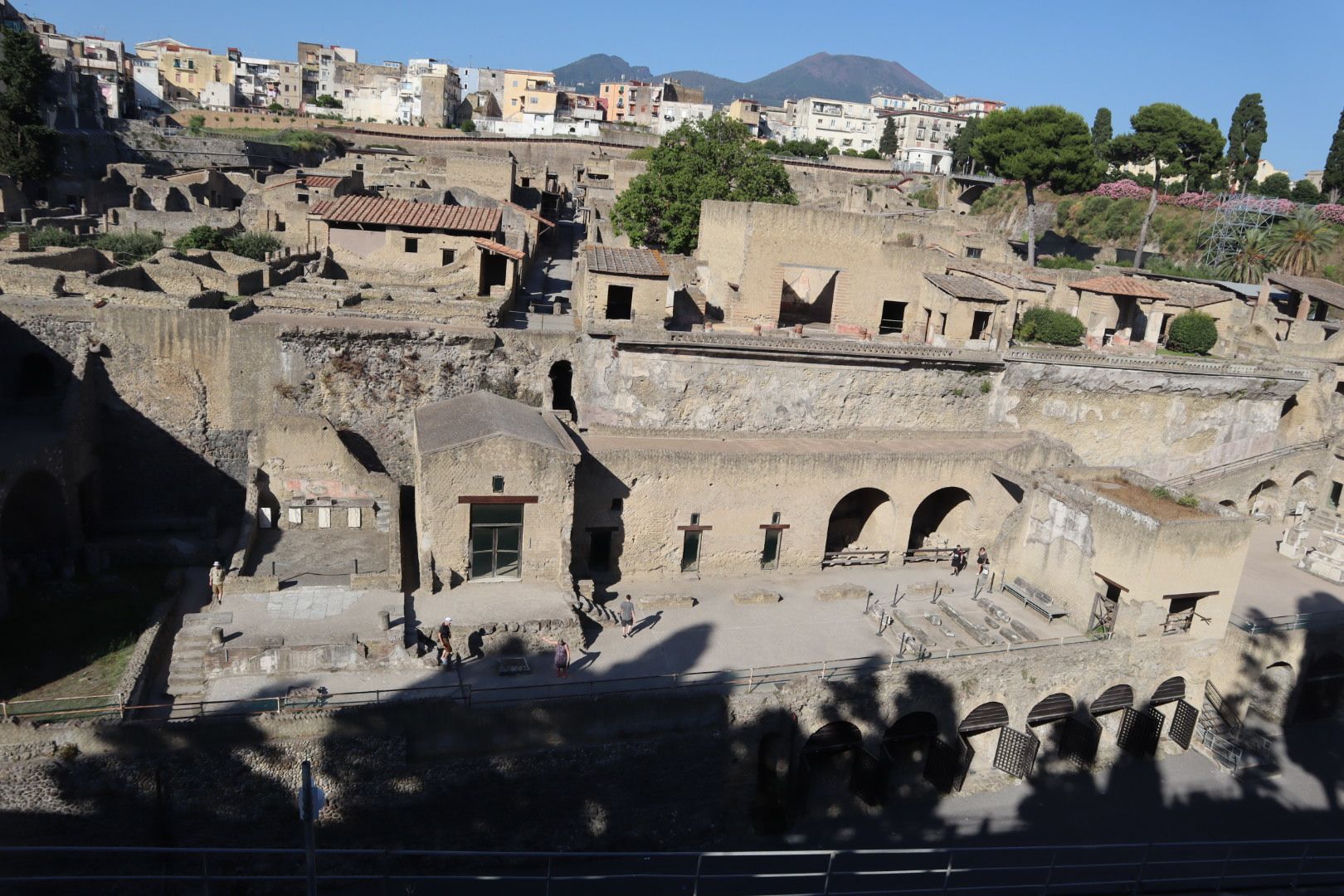
While Pompeii is known as one of the premier tourist spots in Italy, it pales in comparison to Ercolano. In the 16th century, archaeologists began excavation of Pompeii and started to discover the ruins of the city after its demise in 79 AD. Unfortunately, they hadn’t learned the bottom to top excavation method yet, and in the process, destroyed some of the buildings and other remains. While still magnificent, Pompeii has significantly less to offer as an archeological site. Many of the buildings and roads are torn up and unable to be reconstructed. Most tourists believe this is due to the volcanic eruption decimating the entire city, however, it is the fault of the archaeologists and could have easily been avoided if proper measures were taken.
While the discovery of ancient cities was going on, the construction of modern cities was engaging in the background. Naples, Sorrento, and Capri, among others, were growing at a rapid rate, while underneath the surface, the remains of devastated societies sit, waiting to be found in the future.
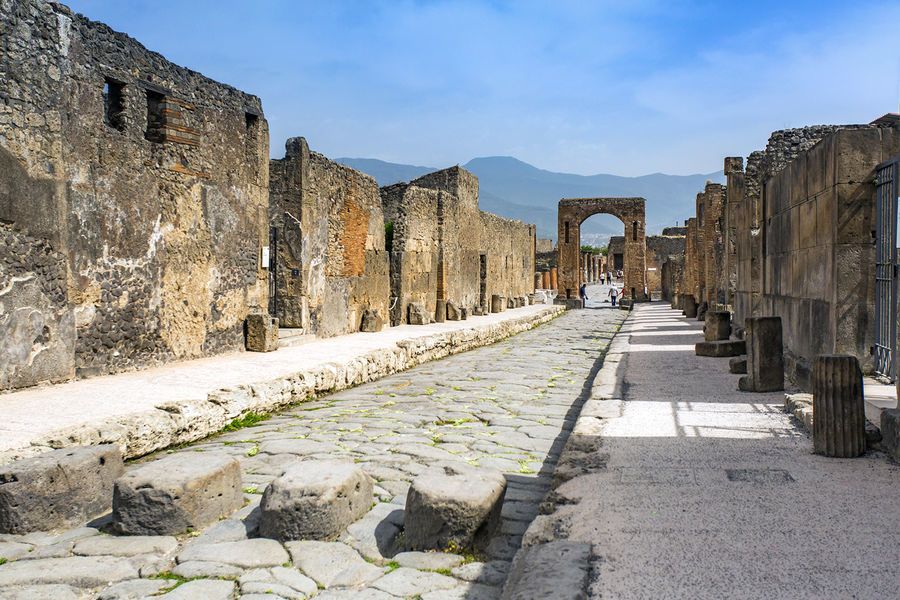
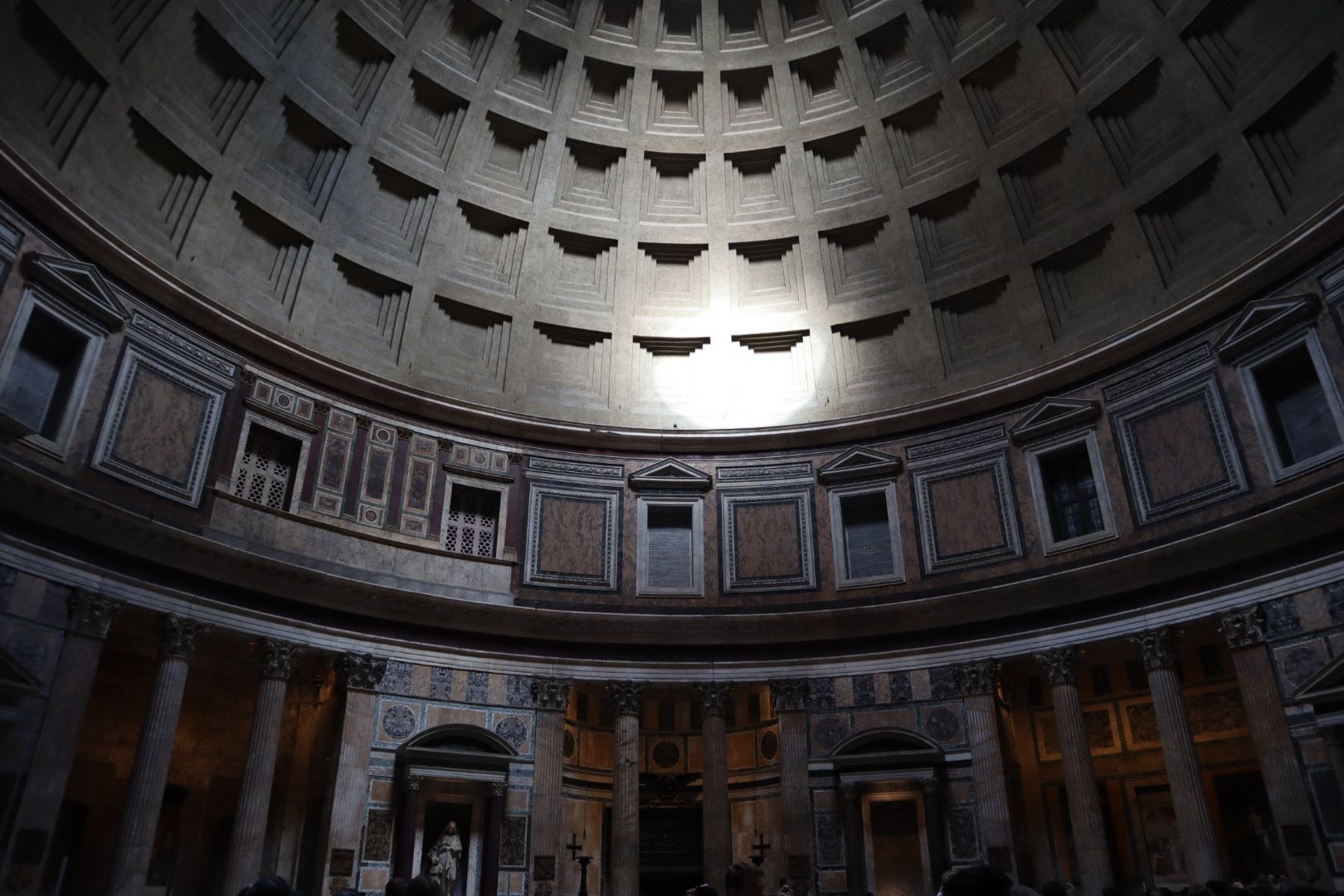
We sat down with Carlo Cardola, a tour guide in the Campania region, to discuss archaeology, and more specifically, Pompeii and Ercolano.
Interview with Public Archeologist Julia Esley
Interview with Public Archeologist Julia Esley
Subway
When it comes to navigating building a subway through the ruins of Ancient Rome today, the construction of the new C Line has been in the works for two decades due to numerous delays. It was originally built with the intent of being finished for the Jubilee next summer; however, it still might take another decade to complete. When completed, the metro line will run under some of the world’s most important sites such as The Colosseum, Trajan’s Column, and the Basilica of Maximus, one of the largest buildings in the Roman Forum, as well as The Vatican. As stated in Finance and Commerce, the construction of the new C Line is considered by the Chief Engineer on this project to be one of the most complicated projects in the world.
It may be thought that the reason for the constant delays on this project is due to construction workers having to constantly shut down their machines when a new artifact is discovered, but this is not the case, as explained by Julia Elsey, who studied Public Archeology at London’s Global University. Elsey explained that the delays are due to government and funding delays. Twenty to thirty years ago, it would have been very difficult to preserve archeological sites while building the new metro line. However, with the new technology, it is now possible to both dig underneath archeological sites and also Ancient Rome above.
